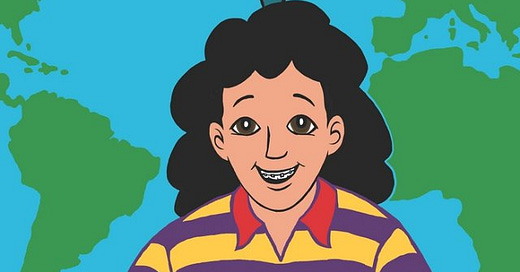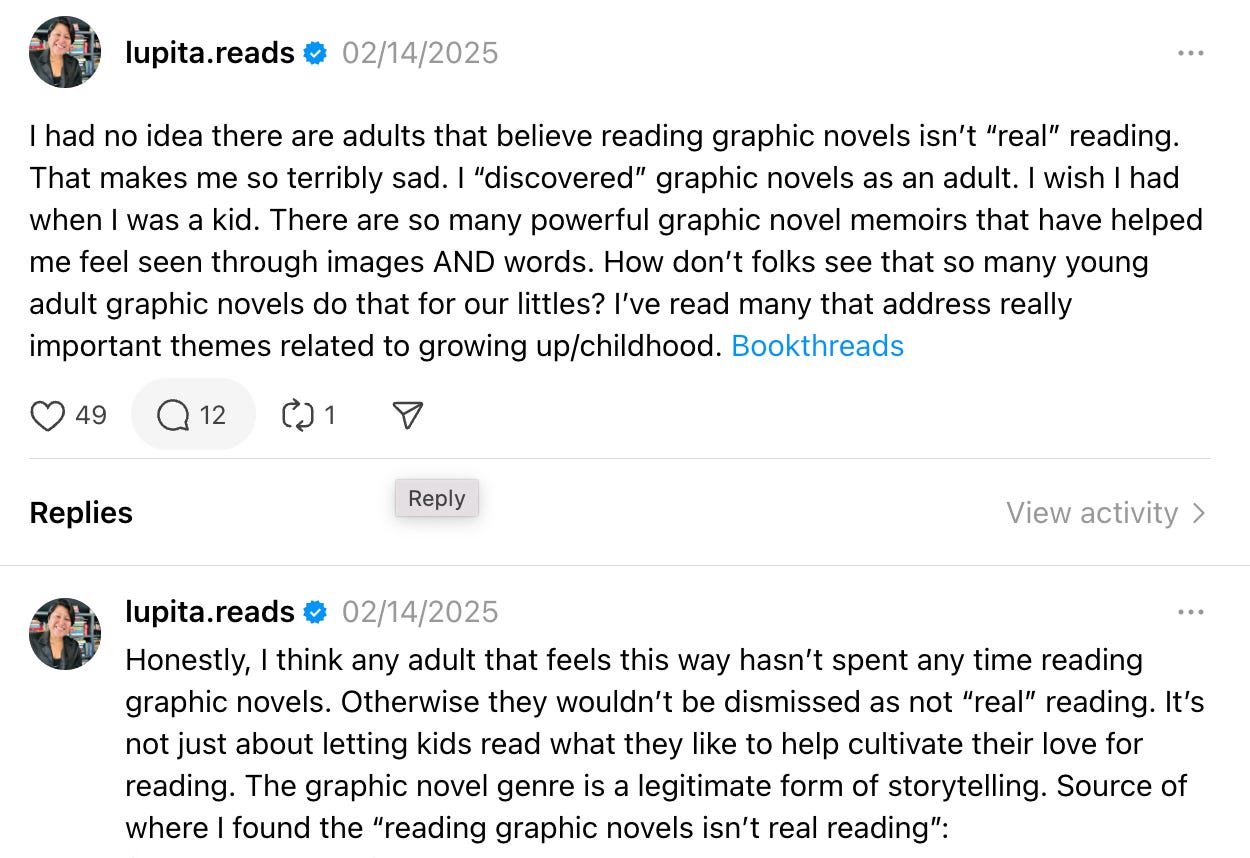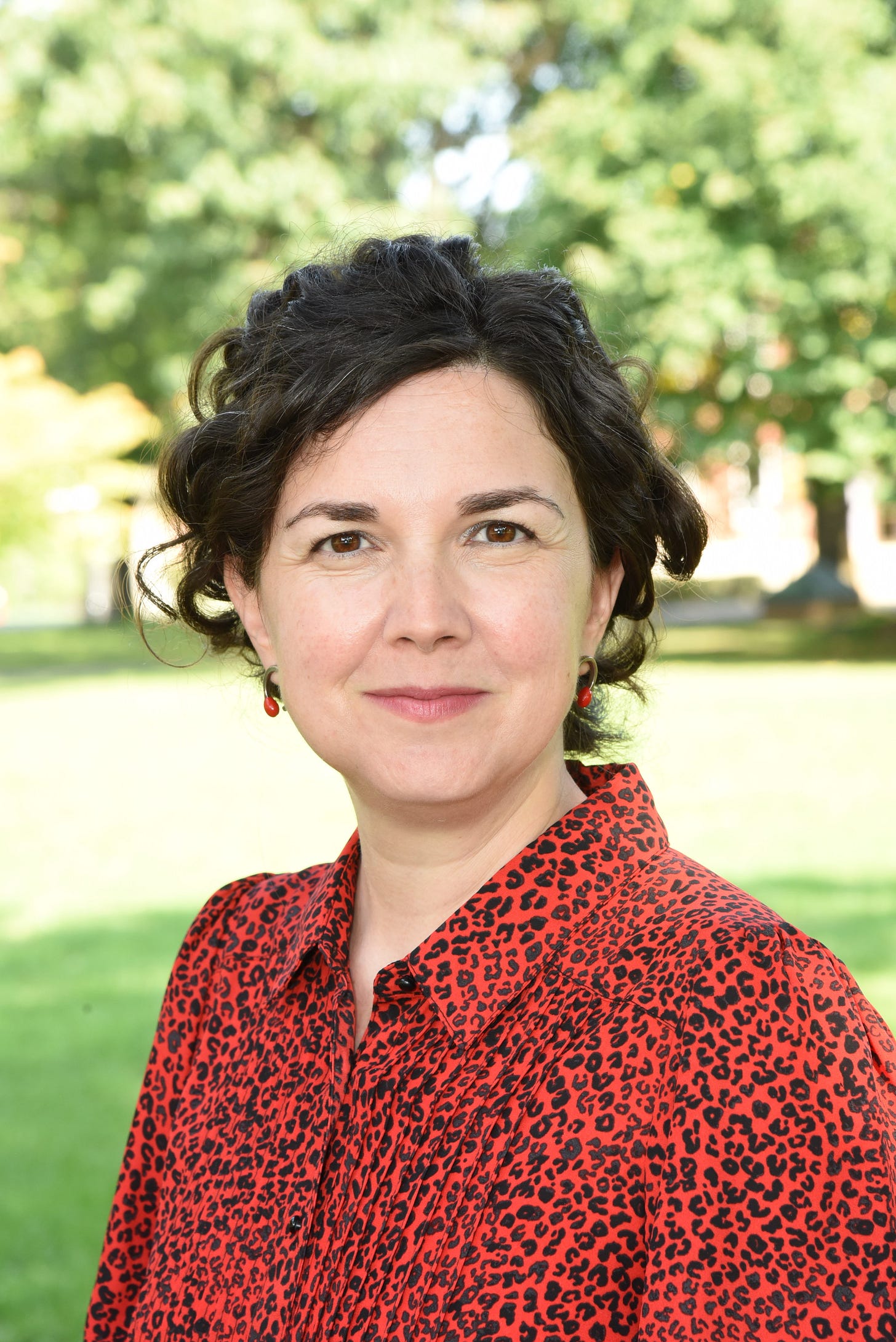#NuevasPáginas: Marcela T. Garcés
with Marcela T. Garcés author of Me Llamo Marcela: My Story as a Heritage Speaker!
Hey Book Franz,
How are you holding up? In case you missed my previous issues or are new here, before we jump into a new author interview/book feature, I want to check in on you. You are welcome to reply out loud to yourself or reply in the comments. As someone who is learning how to check in with myself, it’s a helpful reminder, too. And if it’s helpful to know, my “How are you holding up?” fluctuates a lot throughout the day. Sometimes the answer is “I’m not holding on very well. I think I need _____” and sometimes it’s a confident “I’m doing the best I can, and that is enough.” I’m trying to let all the parts of me that feel different things show up without any judgment so as not to create any inner turmoil. There’s plenty of that on the outside. You can always feel free to reply to this email too. I truly believe community sustains and I’m grateful to be able to be in community with you here.
Today’s featured book could not have come at a better time. Last week, I came across this article. I was a little taken aback by the following:
“According to the School Library Journal’s most recent survey, 55% of librarians said teachers opposed them because they were not “real books,” while 48% said parents felt this way.”
As someone who loves the graphic novel genre, particularly the graphic novel memoir genre. I found this so sad. So I shared the following on Threads:
I still feel like this. Graphic novels are “real” books. It’s one of the most unique forms of storytelling that I’ve personally felt engages different parts of my brain. I know as a society, we talk a lot about poetry and the spaces within poems. Similarly, there are spaces in between the images in graphic novels that ask the reader to not just sit with the images but to make their own inferences. To participate in the storytelling. I’m glad to get to feature in today’s issue, a graphic novel. Also, I’ve included a Graphic Novels TBR list below for adults. If you’ve never given the genre a try, consider this your starter pack.
Graphic Novels TBR (for adults):
Good Talk: A Memoir in Conversations by Mira Jacob
Seek You: A Journey Through American Loneliness by Kristen Radtke
Are You My Mother? A Comic Drama by Alison Bechdel
The Best We Could Do by Thi Bui
That’s just the start. I’ve created a list on bookshop.org with these titles. And I’ll be adding more! If you have a recommendation/favorite graphic novel — tell me about it in the comment section.
In bookish love,
#NuevasPáginas is a space that aims to amplify and spotlight Hispanic/Latine/x authors with newly published books. The goal is to connect readers to their next favorite Hispanic/Latine/x authored book through a mini casual get-to-know-the-book-and-author interview. So please help me connect to more readers. So that together we can continue to build the love/support of Latine literature!
Without further ado…our special guest author for today’s Nuevas Pagina issue is…Marcela T. Garcés author of Me Llamo Marcela: My Story as a Heritage Speaker!
Could you tell me a bit about where this photo was taken? Is it special to your book in some way?
This photo was taken at Siena College in Upstate New York where I’ve worked since 2010. The campus represents an important life destination. My book begins in my childhood when English was my dominant language, and the Spanish language was secondary. I take the reader through many more stops on my journey of committing to learn Spanish when I was a teenager ending at the final stop: I am now a Full Professor of Spanish, and I teach and use the language every day.
Tell me about your book without telling me about your book - share any literary inspirations behind your book! If there are none, the gap you wanted to fill in the literary canon with your book
The aesthetic and storyline of Persepolis by Marjane Satrapi was an inspiration for me and my brother Andrés Garcés, who is the illustrator of the book. Nick Sousanis’s book Unflattening is another graphic narrative we both read and discussed while creating this book. With regard to other literary inspirations, Jhumpa Lahiri’s work informed my work in terms of how she touches on themes of memory and immigration. The work of Federico García Lorca and filmmaker Pedro Almodóvar are long-term inspirations for me, especially how they each use symbols and strong characters.
I wanted to fill a gap in the graphic novel literary canon by presenting a story about the unique needs of heritage speakers. Portraying identity rooted in language through the accessible graphic format felt like the natural way to do this as I see the book as an educational tool that people can read in one sitting, and then ideally discuss it in a class or group setting.
What are two central themes in your book that you connect with the most and why?
First, that being persistent to reach language proficiency (and other goals!) pays off. Second, that our identities are ours to define.
If a book was home, where would your home be?
This one is hard to answer because there are several places where I feel at home in the world. If I had to choose, it would be the Basque Country in Northern Spain, my husband Yuri’s homeland and my adopted one. There’s nowhere quite like it, and we spend our life between there and Upstate New York. It’s a place with a lot of sensory input: a misty rain called sirimiri, the smell of fresh pastries, so many shades of green, a really walkable place, and of course, home to the best food I’ve ever tasted.
If your book was a famous musician who would it be?
Manu Chao. He blends multiple languages and cultures in his music, resulting in a creative concoction of sounds and places, and has family and roots in different places just like me.
What comfort food could a reader pair with your book?
Patacones – fried plantain chips, because they appear in my book!
In what ways has access (or little to no access) to Hispanic/Latinx/e literature defined you as a writer?
Discovering the book How the García Girls Lost their Accents by Julia Alvarez represented a before and after literary moment for me. She was the first author I read who sprinkled Spanish into her work, mixing it with English. When I learned this was possible it was an invitation to the idea that I could write like that, because Spanish and English exist together in my mind. I had read a lot of work in Spanish before discovering Alvarez, but her bilingual style and the themes she wrote about really had an impact on my work.
Where can readers keep up with your work?
LinkedIn: Marcela T. Garcés
Thank you to Marcela T. Garcés for taking the time to chat with me about her book! Please please make sure you purchase a copy (or request your local library carry a copy) #SupportLatinxLit!
Marcela T. Garcés is Professor of Spanish at Siena College near Albany, New York, where she teaches a range of courses on the Spanish-speaking world, focusing on topics from fashion and film to cuisine. She has authored scholarly works in these areas as well as creative pieces in English and Spanish. She and her husband, Yuri, also operate La Centralita Culinary Studio, teaching the community about the cuisines of Spain. Marcela loves motivating students of all ages on their unique language and cultural journeys.
Synopsis for Me Llamo Marcela:
On her first day of middle school Spanish class, Marcela thought she'd excel--after all, she'd grown up speaking Spanish at home and on visits to family in Colombia. Instead, she quickly felt like a confused imposter, unsure how a language that was part of her heritage and identity could so elude her. And so, at age thirteen, with the help of her Spanish teacher Doña Maribel, Marcela began her formal journey studying Spanish. She never anticipated how much she'd discover about learning a language and what it means to be a heritage speaker--someone who grows up using a language at home but often lacks more formal knowledge of it. In this charming graphic memoir that captures a little-discussed aspect of growing up multicultural, Marcela recounts her earliest Spanish teachers: Colombian street vendors, family members who shouted or whispered words, and her beloved Doña Maribel, who helped her connect the Spanish of her youth with what she was learning in the classroom. Childhood memories from trips to Colombia intertwine with her adolescence, when Marcela resolves to study the language for herself, not because people correct her or expect her to speak it well but because she wants to learn. This comic, drawn by Marcela's brother Andrés, shows the complicated path of language and identity that Marcela travels as a heritage speaker.










oh friend, i am certainly not holding up well these days. but i am grateful for people like you & spaces like this which serve to provide wholesome community & keep me from abandoning my passions x
Love the graphic novel recs! A few other graphic memoirs I loved are Ducks, Stitches, and Belonging.